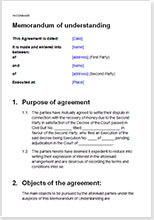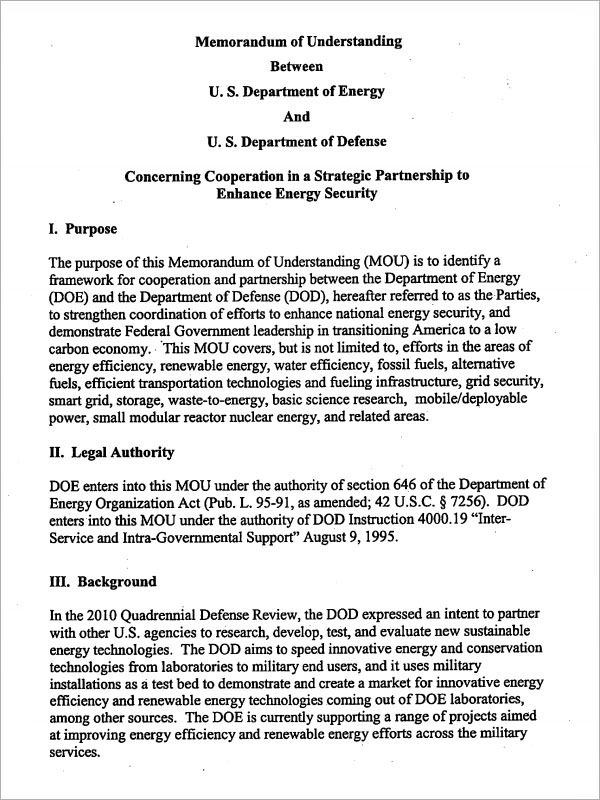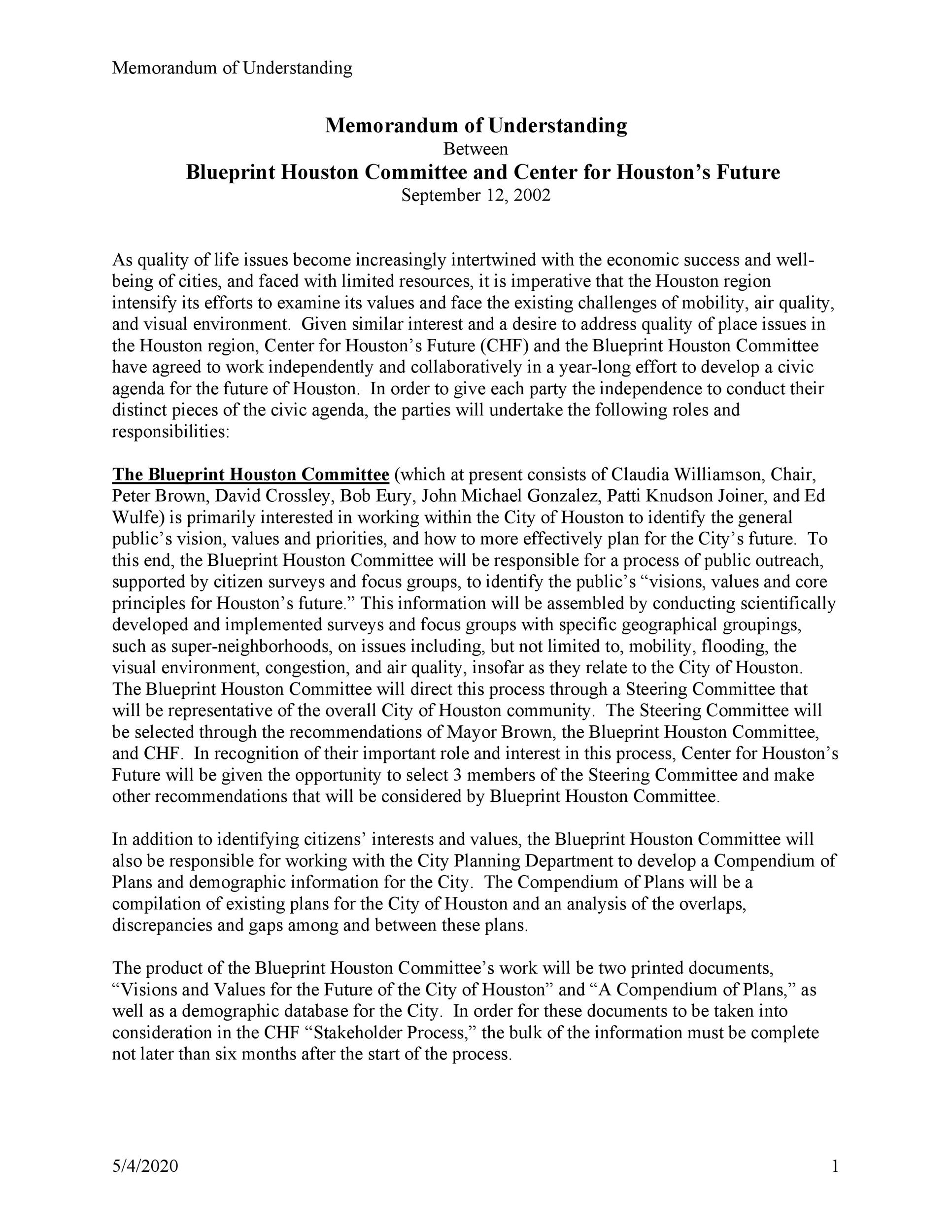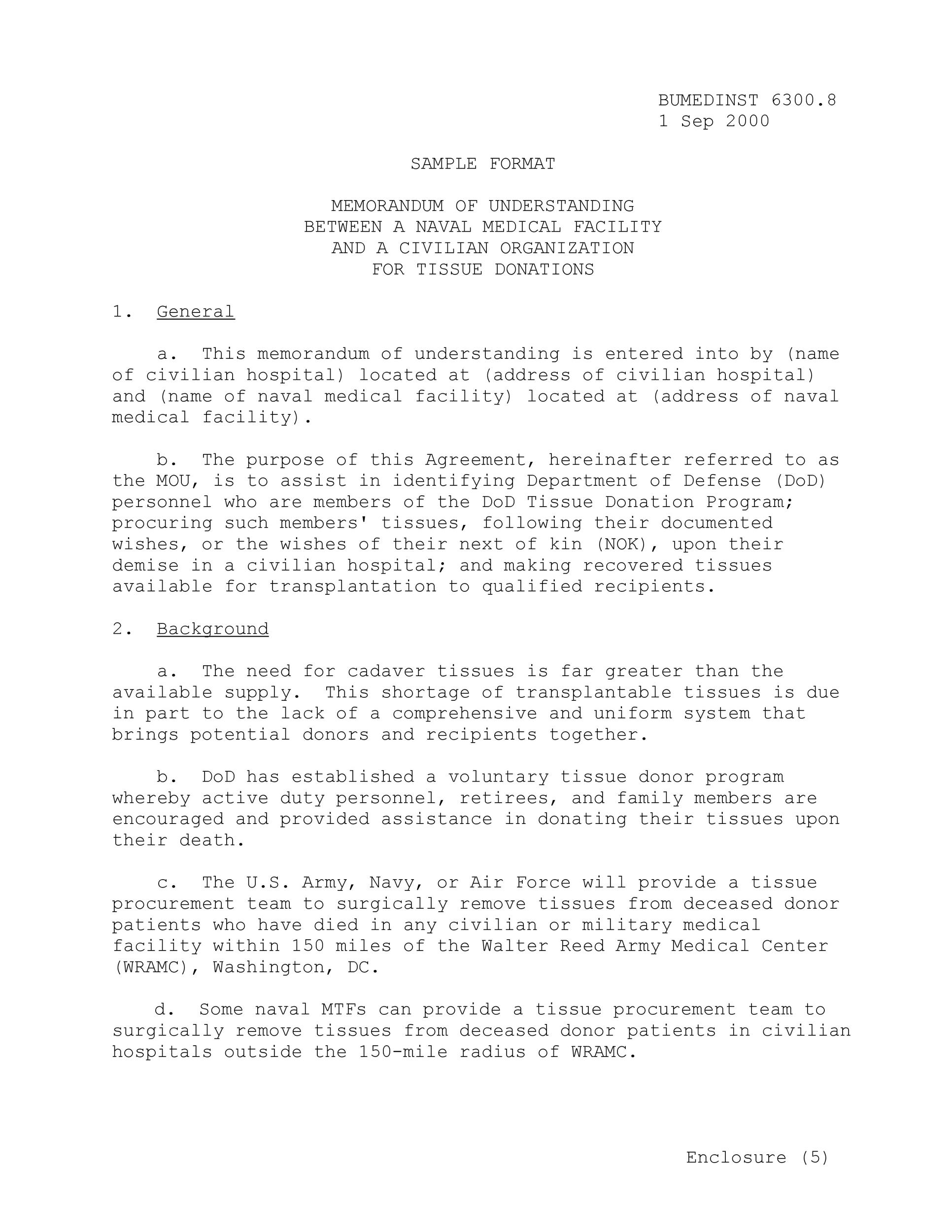

This Memorandum may be amended or supplemented in writing, if the writing is signed by the party obligated under this Memorandum. Neither party may assign or transfer the responsibilities or agreement made herein without the prior written consent of the non-assigning party, which approval shall not be unreasonably withheld. This Memorandum shall be construed in accordance with the laws of the State of Commonwealth of.

The term can be extended only by agreement of all of the Partners.Īny notice or communication required or permitted under this Memorandum shall be sufficiently given if delivered in person or by certified mail, return receipt requested, to the address set forth in the opening paragraph or to such other address as one party may have furnished to the other in writing. The arrangements made by the Partners by this Memorandum shall remain in place from until. In the event the dispute resolution group is unable to make a compromise and reach a final decision, it is understood that neither party is obligated to enter into any binding contract to complete the Project. The Partners agree that a decision of the dispute resolution group will be final.

The dispute resolution group may receive for consideration any information it thinks fit concerning the dispute. In the event of a dispute between the Partners in the negotiation of the final binding contract relating to this Project, a dispute resolution group will convene consisting of the Chief Executives of each of the Partners together with one other person independent of the Partners appointed by the Chief Executives. No liability will arise or be assumed between the Partners as a result of this Memorandum. Coordinated communications should be made with external organizations to elicit their support and further the aims of the Project. Where it does not breach any confidentiality protocols, a spirit of open and transparent communication should be adhered to. Signatures from leadership within the organizations, such as the executive director, board president, or other designated decisionmaker, and the date the document was signed.Marketing of the vision and any media or other public relations contact should always be consistent with the aims of the Project and only undertaken with the express agreement of both parties.A point of contact for each organization who will facilitate collaboration.Also, include language so that either party can end the agreement for any reason within a 30-day period based on written notification.

Include language that leaves opportunity to renew the agreement. The length of time that the MOU will be valid - often known as a period of performance - that includes the date the MOU takes effect and when it ends.Language outlining if and how partnership will be announced to the public and/or media.Guidelines defining ownership of jointly developed materials and use of those materials after the MOU has expired.For example, does an organization have branding guidelines that must be followed when creating joint materials? Guidelines defining the use of each organization’s logo and name in joint materials such as press releases, fact sheets, brochures, websites.Information detailing how costs associated with joint efforts will be authorized and paid for.Details about specific projects and initiatives on which the organizations will collaborate, including the scope of projects and the length of time the projects will last.Given the legal nature of the documents, however, it’s wise to have a legal representative review the language included in the MOU before it is signed.Ī well-executed MOU includes the following: While MOUs are technically legally binding, consider these documents as a tool to facilitate partnership and ensure a smooth working relationship between two organizations. MOUs are like contracts that define the way two organizations will work together. A memorandum of understanding (MOU) is a written agreement between two organizations that helps establish the ground rules for any partnership activities you choose to explore.Īn MOU should outline what each organization agrees to contribute to a partnership, a timeframe for delivering the desired outcomes, details of exactly how each party will collaborate (e.g., regular in-person meeting, conference calls, written approval of all activities by both parties), and how the parties will authorize and pay for any costs incurred in delivering the desired outcomes.


 0 kommentar(er)
0 kommentar(er)
